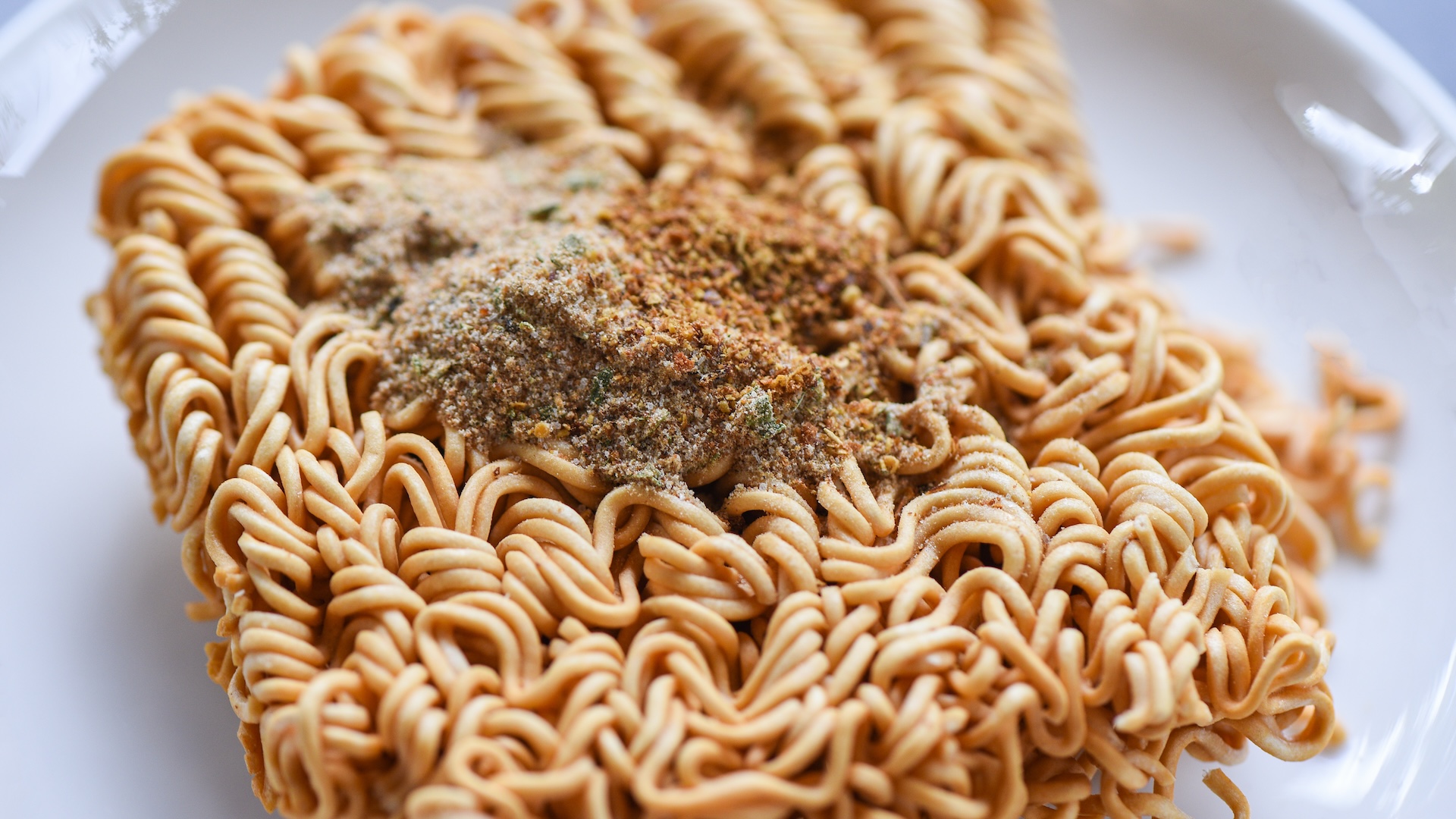
For more than half a century, the savory flavor enhancer monosodium glutamate (MSG) has gotten a bad rap, with people blaming it for a constellation of symptoms, including headache, indigestion, feeling flushed and acid reflux. And Chinese restaurants have faced the brunt of this condemnation.
But is MSG really bad for you, or is there more to the story?
According to the U.S. Food and Drug Administration, MSG is considered safe and always has been, according to a 1995 safety study the FDA commissioned. MSG is the sodium salt of the amino acid glutamic acid (and, despite its name, there is no gluten in it). The 1995 study reported some instances of mild and short-term symptoms, like headache, flushing or drowsiness, when individuals who are sensitive to MSG consumed a large amount — 3 grams or more — without food. "However, a typical serving of a food with added MSG contains less than 0.5 grams of MSG. Consuming more than 3 grams of MSG without food at one time is unlikely," according to the FDA.
If the case on MSG was closed decades ago, why are people still avoiding it? The long-held fear around this umami-boosting ingredient is rooted in an old letter, a series of bad studies and media hysteria of the 1960s and beyond.
In 1968, a Maryland doctor named Robert Ho Man Kwok wrote a letter to the New England Journal of Medicine describing his symptoms — numbness, weakness and heart racing — after eating Northern Chinese food. He called the sensation "Chinese Restaurant Syndrome" and suggested three possible culprits: salt, cooking wine or MSG.
Related: Why does mint make your mouth feel cool?
MSG was isolated and patented by a Japanese chemist named Kikunae Ikeda in the early 1900s. It became a commonplace additive in East Asian cooking through Japanese imperialism. By around 1926, MSG was making its way to the U.S. by two channels: Chinese restaurants and canned foods, like those from Campbell's Soup Company. By the time of Kwok's letter, MSG was a nearly ubiquitous food additive found in all sorts of processed, packaged and restaurant-prepared foods, and was even a household spice.
A host of doctors and scientists responded to Kwok's letter describing their own versions of Chinese Restaurant Syndrome, but there was little overlap in symptoms. It's even been suggested that the entire exchange was bogus, meant to be a joke by Dr. Howard Steel, an orthopedic surgeon who wagered he could get published in the prestigious New England Journal of Medicine. But the media still latched on at the time, publishing headlines like "Chinese Restaurant Syndrome Puzzles Doctors" and stigmatizing Chinese cuisine.
At first, no particular ingredient was singled out — after all, "Kwok" had suggested three potential causes of his alleged maladies. But between 1968 and 1969, a series of poorly executed studies attempted to establish Chinese Restaurant Syndrome as a medical condition driven by MSG.
"When you look at the trials, it's pretty extreme," said Dr. Fred Cohen, a headache specialist and assistant professor of medicine and neurology at the Icahn School of Medicine at Mount Sinai in New York, who recently published a review of the evidence against MSG.
Meanwhile, the early trials that became the basis for MSG's infamy were wildly biased. In unblinded studies, researchers gave wonton soup to volunteers who had already had a bad reaction to food at a Chinese restaurant to see if there was a negative response. Unsurprisingly, they found what they were looking for.
Later studies tested MSG's health effects in mice and linked the additive to brain lesions and obesity — but in these cases the MSG was injected under the skin, rather than ingested as it would be in humans and given in exorbitant doses.
Related: Why do our flavor preferences change over time?
As researchers continued to publish faulty and misleading studies and the media amplified their findings, public perception was cemented. People saw MSG as a poison and Chinese restaurants as the source.
Chinese restaurants began hanging "No MSG" signs in their windows. Food manufacturers added the same language to their packaging. In 2024, Yelp reviews are still littered with talk of MSG-induced symptoms, even though the phenomenon has been widely debunked.
"Fast food and snacks are usually high in MSG, but do not carry the same extent of complaints," added Kantha Shelke, principal scientist at Corvus Blue LLC, a food science and nutrition research and regulatory affairs firm based in Chicago. Meanwhile, foods like tomatoes, mushrooms, and Parmesan cheese naturally contain MSG but there's no talk of "Italian Restaurant Syndrome," she told Live Science.
Shelke said there's also the power of suggestion to consider. The stigma around MSG and Chinese food encapsulates the "nocebo" effect: the phenomenon in which negative expectations or beliefs about a substance lead to unpleasant symptoms, even in the absence of any physiological cause. In other words, people can manifest real reactions, such as headaches, feeling flush or nausea, because they've been told to expect one.
In his review, Cohen's team found that while MSG could be a potential trigger for headaches, many studies used MSG doses much higher than normal consumption. Clinical trials report "conflicting results" and MSG's role in causing migraine is unclear, the researchers wrote in the review.
There are a variety of ingredients, like alcohol, dairy, or eggs, that are broadly considered safe, but still trigger headaches in a few, Cohen told Live Science. While MSG can be a headache trigger, "a lot of people think it is when it's not," he said.
This article is for informational purposes only and is not meant to offer medical advice.







